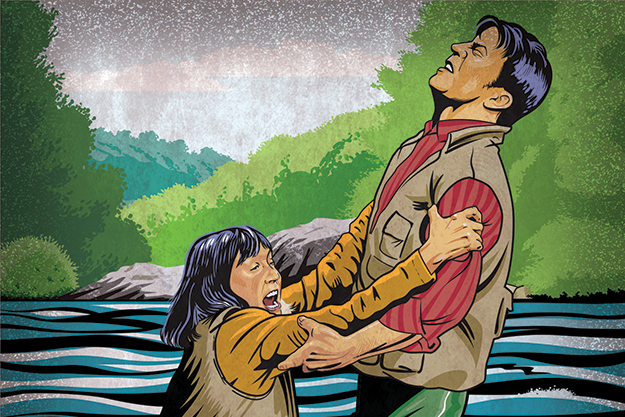Advertisement
The high water came late to western rivers through the cool summer of 2011, and the Cheakamus ran high well into August. When conditions finally improved, Justin Chan and Amy Wong headed north from Vancouver up the Sea-to-Sky Highway for a long-awaited day of stream fishing. Through the morning and again after lunch, they hiked down along the boulder-strewn river, casting here and there to promising riffles.
Toward mid-afternoon, while setting the hook on a modest rainbow, Wong stumbled backwards in the ankle-deep current. Laughing, Chan strode toward her and extended his hand to help her up. In a heartbeat, they were both floundering and being swept downriver. Two hours later, Chan was found floating face down. Wong’s body has never been recovered.
Advertisement
It was a tragedy that should never have happened, but that it did drives home the fact that flowing water, no matter how fast or how deep, is treacherous. Things can go wrong in an instant, and it can happen to anyone. Safe wading is a three-pronged program—you need to take the necessary precautions, be realistic about your abilities and know what to do when you do go in the drink.
Play safe
Ditch the hip waders and insist on chest waders and boots with the appropriate soles for the conditions at hand—felt soles are generally okay, but cleats can be lifesavers when it comes to greasy, slimy boulders. Carry a wading stick and don’t hesitate to use it. And wear a belt and cinch it snug. No, it will not trap the air inside your waders to keep you afloat. If you do go under, however, it will prevent water from rushing in and dragging you along in the current. For added precaution, also wear a flotation device, whether it’s a vest or a CO2-inflated PFD. It may not look cool, but neither does floating face down in some backwater eddy.
Advertisement
Use common sense
A bit of self-appraisal works wonders. A desk job may provide you with the financial well-being to bankroll your fishing gear and outings, but it doesn’t prepare you for the effort of wading in current. Exercise those leg muscles. Between fishing trips, hike to build stamina and strong legs. Also, understand that it’s not necessary to wade out to the top of your chest-highs. That’s where the fish live and where you should be casting to, not wading.
Save your own hide
If you get into trouble, help may not be able to reach you in time to do any good, so knowing how to help yourself is critical. A practised response takes advantage of those critical first moments to regain control. If your feet are swept out from under you, swim as if your life depended on it, because it does. Yes, you can swim in waders—not gracefully, but enough to keep your head out of the water. So, practise swimming in waders, then try it wearing an inflatable vest. It made a believer out of me.

